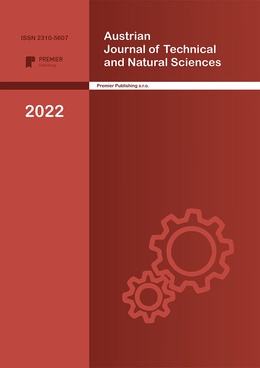ION-SALT COMPOSITION OF WESTERN DEEP-WATER PART OF GREAT ARAL SEA AND ITS VARIABILITY
Authors
Turemuratova Alfiya Sharibaevna, Reymov Karjaubay Dauletbaevich, Allaniyazov Davran Orazymbetovich, Erkaev Aktam Ulashevich

Share
Annotation
The process of draining the bottom of the Aral Sea is relative to the content of individual ions, which depends on the regions of the staged salt formations. Based on the results of the studies, measures were developed the relative content of which decreased from the dried bottom of the Aral Sea. Our drilling of the bottom of the Aral Sea showed that the thickness of soil sediments from the south to the north ranges from 2 to 6 m with a humidity of 40-80%. Salt content of groundwater was 0,4-0,9% lower compared to seawater.
Based on studies conducted to establish the distribution patterns of clay materials and soluble salts in the soil, the western shore of the Great Aral Sea was divided into three layers. In the first layer, there is no pattern of change in the observed indicators. The second and third layers separately and the relationships have certain patterns. It has been found that in the second layer, with increasing depth, the content of clay components of the soil decreases, and at the beginning of the third layer it increases again, but less than at the beginning of the second layer. These phenomena affect the distribution of soluble salts.
Keywords
Authors
Turemuratova Alfiya Sharibaevna, Reymov Karjaubay Dauletbaevich, Allaniyazov Davran Orazymbetovich, Erkaev Aktam Ulashevich

Share
References:
- Rafikov A.A. Tetyukhin G.F. Decrease in the Aral Sea level and change in the natural conditions of the lower Amu Darya. Tashkent, 1981. -199 s.
- Andrianov B.V. History of the impact of agriculture on the nature of the Aral region//Izv. AN. 1991. Ser. № 4. - S. 47-61.
- The Great Aral Sea at the beginning of the 20th! centuries: physics, biology, chemistry/P.O. Zavyalov, E.G. Arashkevich, I. Bastida, etc.; Institute of Oceanology named after P.P. Shirshov RAN.M.: Science, 2012.-229s.
- Kes A.S. Palaeography of the Aral Sea in the Late Pleistocene//Paleogeography of the Caspian and Aral Seas in the Cenozoic. 1983. 4.2. - S. 97106.
- Fedorov P.V. Some issues of paleogeography of the Caspian and Aral in the late Pliocene and Pleistocene//Paleogeography of the Caspian and Aral Seas in the Cenozoic. 1983.4.1.
- http://www.oceanology.ru/aral-sea-shallow/
7. Arinushkina E.V. Manual on chemical analysis of soils. M.: Moscow State University Publishing House, 1970. p.257.
8. Henkel P.A. Plant physiology. M.: Enlightenment, 1975, p. 140-208.
9. Kovda V.A. Problems of combating desertification and salinization of irrigated soils. M.: Kolos, 1984, p. 304.


